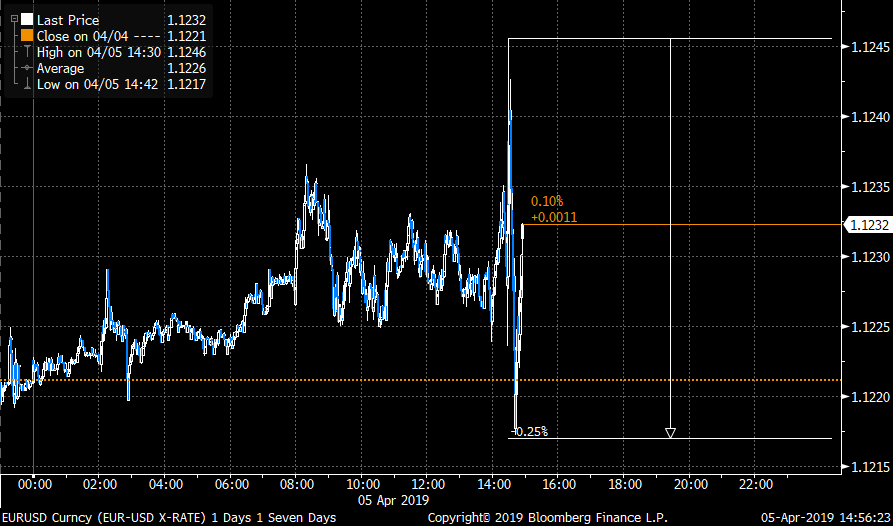Monex: Trage loongroei VS redt reputatie Fed
Monex: Trage loongroei VS redt reputatie Fed

Hieronder volgt een commentaar in het Engels van Bart Hordijk, valuta-analist bij Monex Europe, op het Amerikaanse arbeidsmarktrapport dat zojuist is verschenen. Het aantal toegevoegde banen is keurig conform de trend, hoewel de loongroei wat achter blijft na de (sterke) maand februari. En dat is misschien maar goed ook voor de Federale Reserve, want een sterke loongroei had tot ongemakkelijke vragen geleid over de recente dovish U-bocht van de Fed. Nu lijkt de arbeidsmarkt juist uitermate stabiel, wat zijn afwachtende houding rechtvaardigt. Renteverlagingen lijken echter voorbarig op basis van dit arbeidsmarktrapport.
The most important lesson from today’s US labour market data is that wage growth didn’t further accelerate in March, while the number of added jobs remains on trend. This justifies further rate hikes, nor further rate cuts at the moment.
Last month’s shocker of a miss of 20K of added jobs in February (adjusted to 33K today) pushed last month’s stronger than expected wage growth of 0.4% percent month-on-month out of the limelight. A similar reading this month would have at least inspired a few embarrassing inquiries into the Federal Reserve’s recent dovish shift. Luckily for the Federal Open Market Committee, one might say, this month’s Average Hourly Earnings growth underwhelmed the 0.3% expectation by increasing by only 0.1%. This brings the wage increases in the first quarter to 0.6% in total, which is solid, but far from running away.
The labour market in the US appears to be very stable at the moment, with employment growth which has averaged 180.000 over the last three months, labour force participation being oscillating around 63% over the last 12 months and wage growth slowing nor accelerating. This tells us the US economy continues to be in a healthy state and that the the economy continues to be able to add jobs, without creating high levels of wage inflation. The stability in the US job market indeed justifies a wait and see approach by the Fed until the end of the year, although pricing in a rate cut for 2019 seems premature for now. Data from the one of the most important pillars of the economy – the labour market – should first point towards a slowdown in a much stronger fashion before speculation about a recession and rate cuts are justified.
In short: the Fed’s reputation is saved for now, although this doesn’t mean that markets pricing in a rate cut for 2019 are right.






